 Bristol is the focus of this week’s Persephone Post. It is a city much in the news because of its admirable toppling of the Colston statue: obviously one cannot in general approve of people going around toppling statues but in this case its removal had been under discussion for years, nothing had been done and one can only admire the group of brave and efficient people who removed it. But Bristol is also in the news because of an excellent series currently on BBC2: in A House Through Time David Olusoga traces the history of a an early eighteenth-century Bristol house in a fascinating and un-clunky way. Here is a piece about the programme and here is a Guardian piece about the toppling of the statue and its world-wide ramifications. At Persephone Books we can do nothing but applaud from the sidelines. We would like to do more and indeed people often write to us and ask if we are going to publish a novel by a Black or Asian writer and we always respond by saying that we want to very much indeed and could they recommend one that fits in with our remit of (mainly) mid C20th, (mainly) women writers; we are convinced we shall find one eventually. Meanwhile we applaud the conclusion to the Guardian article: ‘Many are glad Colston is no longer spoiling their visits to the city centre and there is also some pride that the actions of a Bristol crowd prompted soul-searching elsewhere. “Bristol was one of the first cities to catch on to the slave trade and it made a vast fortune… It is therefore fitting that this city has started a debate about racism and history.”’ The picture that the Guardian used to illustrate this comment needs to words.
Bristol is the focus of this week’s Persephone Post. It is a city much in the news because of its admirable toppling of the Colston statue: obviously one cannot in general approve of people going around toppling statues but in this case its removal had been under discussion for years, nothing had been done and one can only admire the group of brave and efficient people who removed it. But Bristol is also in the news because of an excellent series currently on BBC2: in A House Through Time David Olusoga traces the history of a an early eighteenth-century Bristol house in a fascinating and un-clunky way. Here is a piece about the programme and here is a Guardian piece about the toppling of the statue and its world-wide ramifications. At Persephone Books we can do nothing but applaud from the sidelines. We would like to do more and indeed people often write to us and ask if we are going to publish a novel by a Black or Asian writer and we always respond by saying that we want to very much indeed and could they recommend one that fits in with our remit of (mainly) mid C20th, (mainly) women writers; we are convinced we shall find one eventually. Meanwhile we applaud the conclusion to the Guardian article: ‘Many are glad Colston is no longer spoiling their visits to the city centre and there is also some pride that the actions of a Bristol crowd prompted soul-searching elsewhere. “Bristol was one of the first cities to catch on to the slave trade and it made a vast fortune… It is therefore fitting that this city has started a debate about racism and history.”’ The picture that the Guardian used to illustrate this comment needs to words.
Archives: Persephone Post

And the final Mary Petty. What a fortnight of joy and humour and sadness and irony! And fierce comments on the people amongst whom she found herself living. Who are now almost a vanished breed. Almost.

It’s the expressions on the faces of the people Mary Petty draws! Just a little pencil line – and perfection.

Another novel, or short story at least, in one drawing!

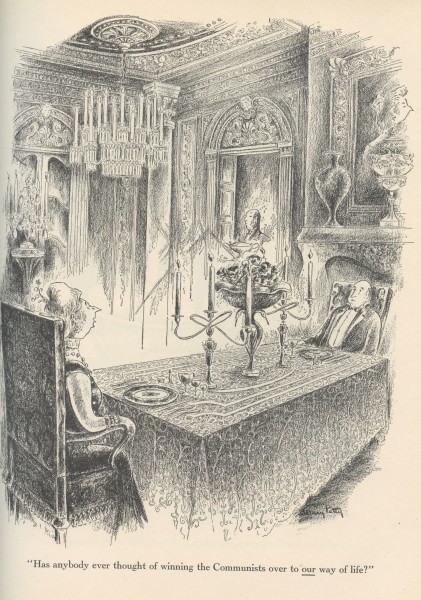
This Mary Petty cartoon is more than merely funny (it must date from the 1930s): it is quite profound in a left-field way.
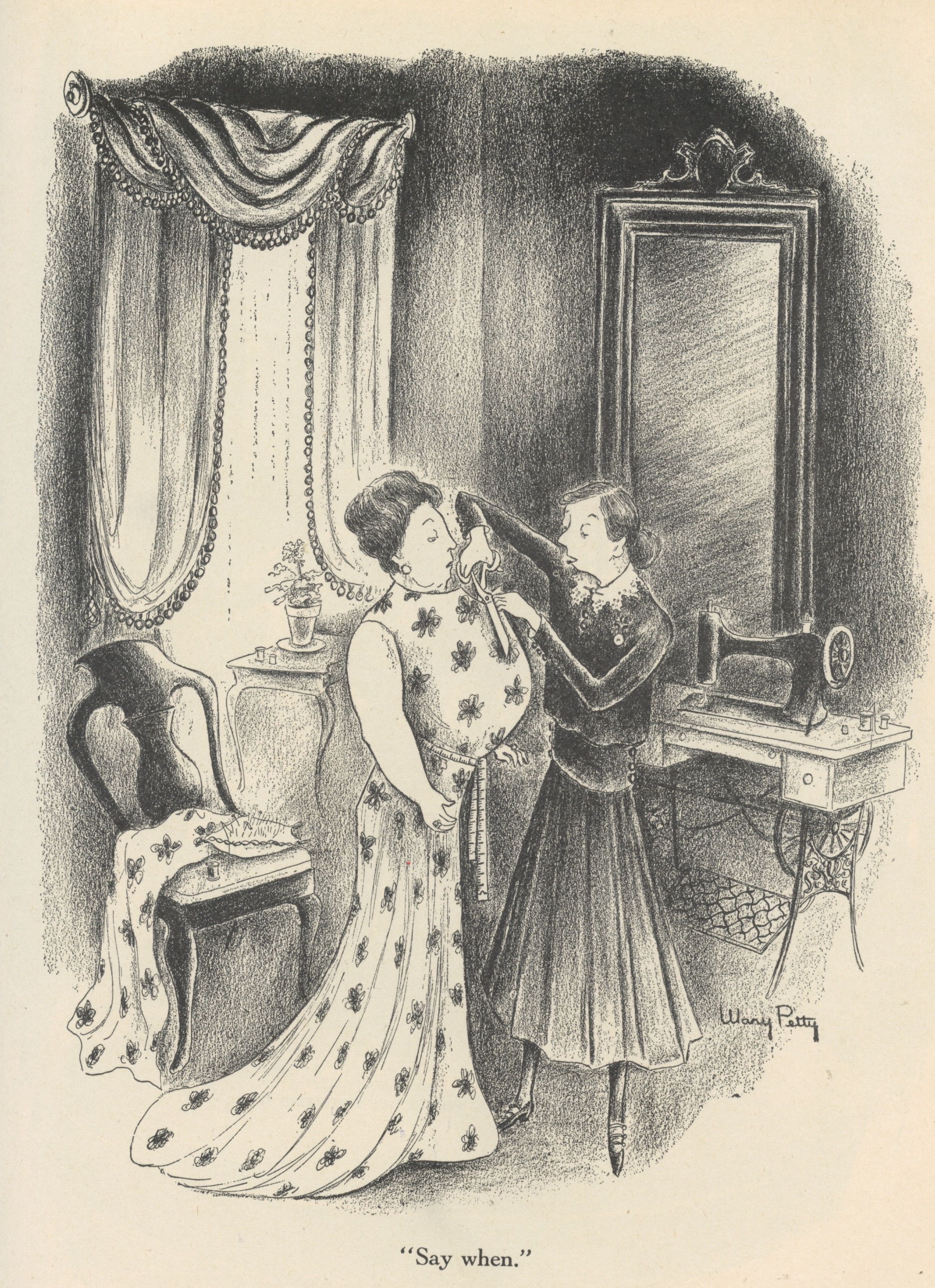
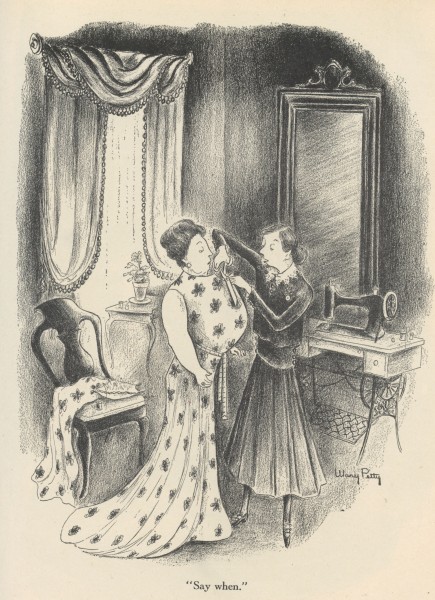
Happily, Mary Petty is making everyone laugh (and it’s quite rare to be able to find a forgotten female cartoonist) so we shall feature her for a second week next week.
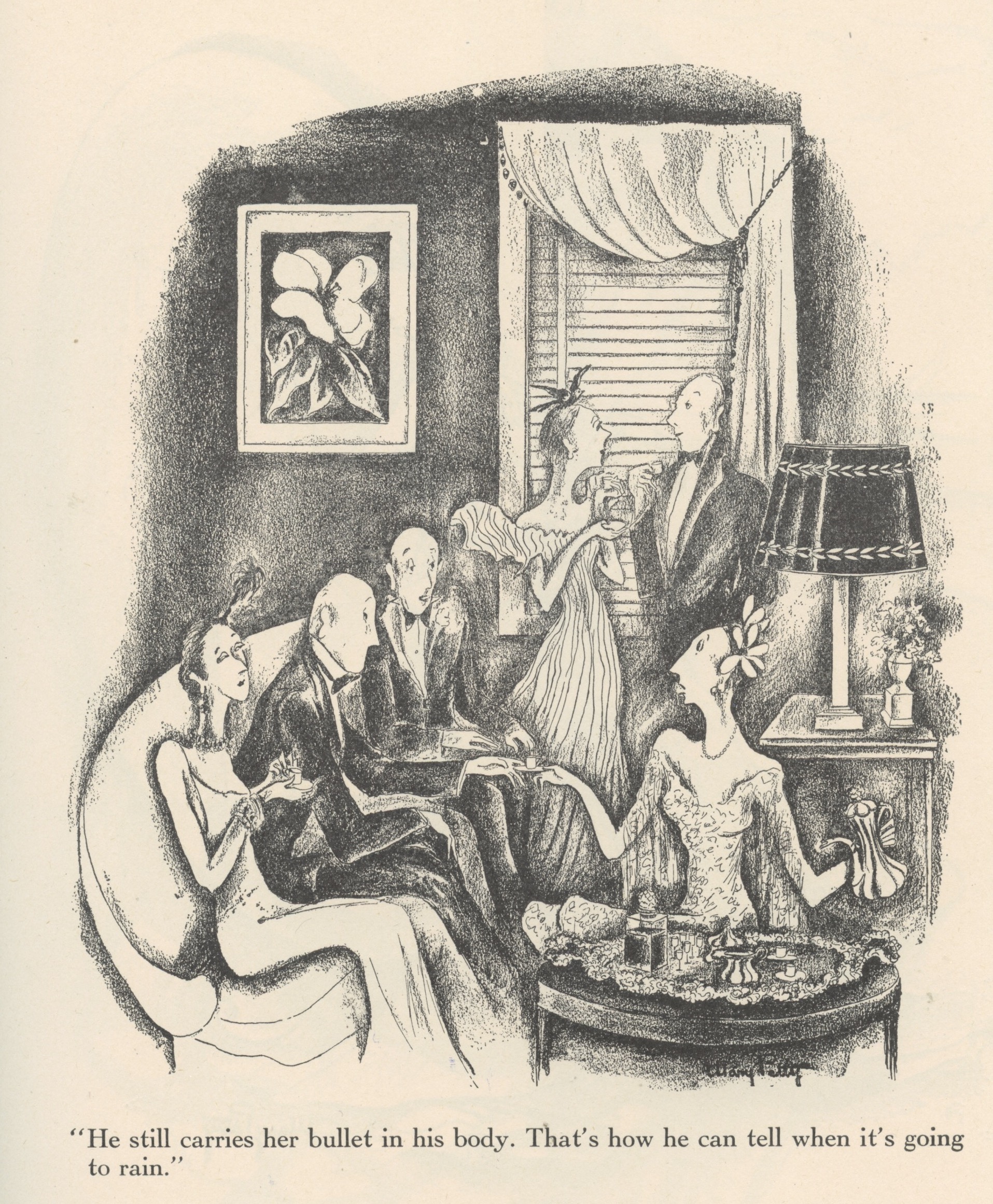
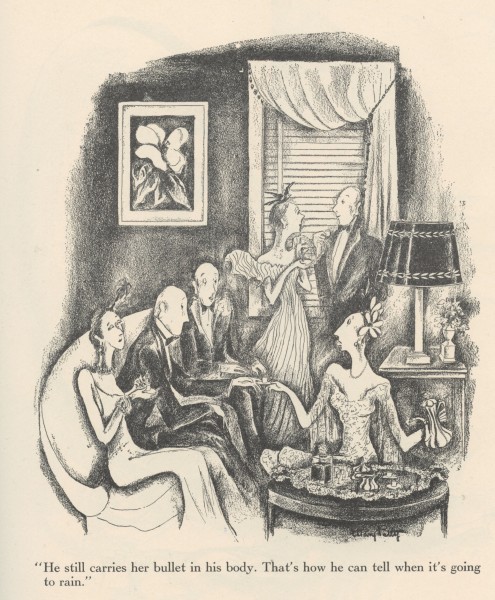
And another Mary Petty cartoon to make you both groan and smile: after the daily agony of reading the Guardian a smile is much needed.
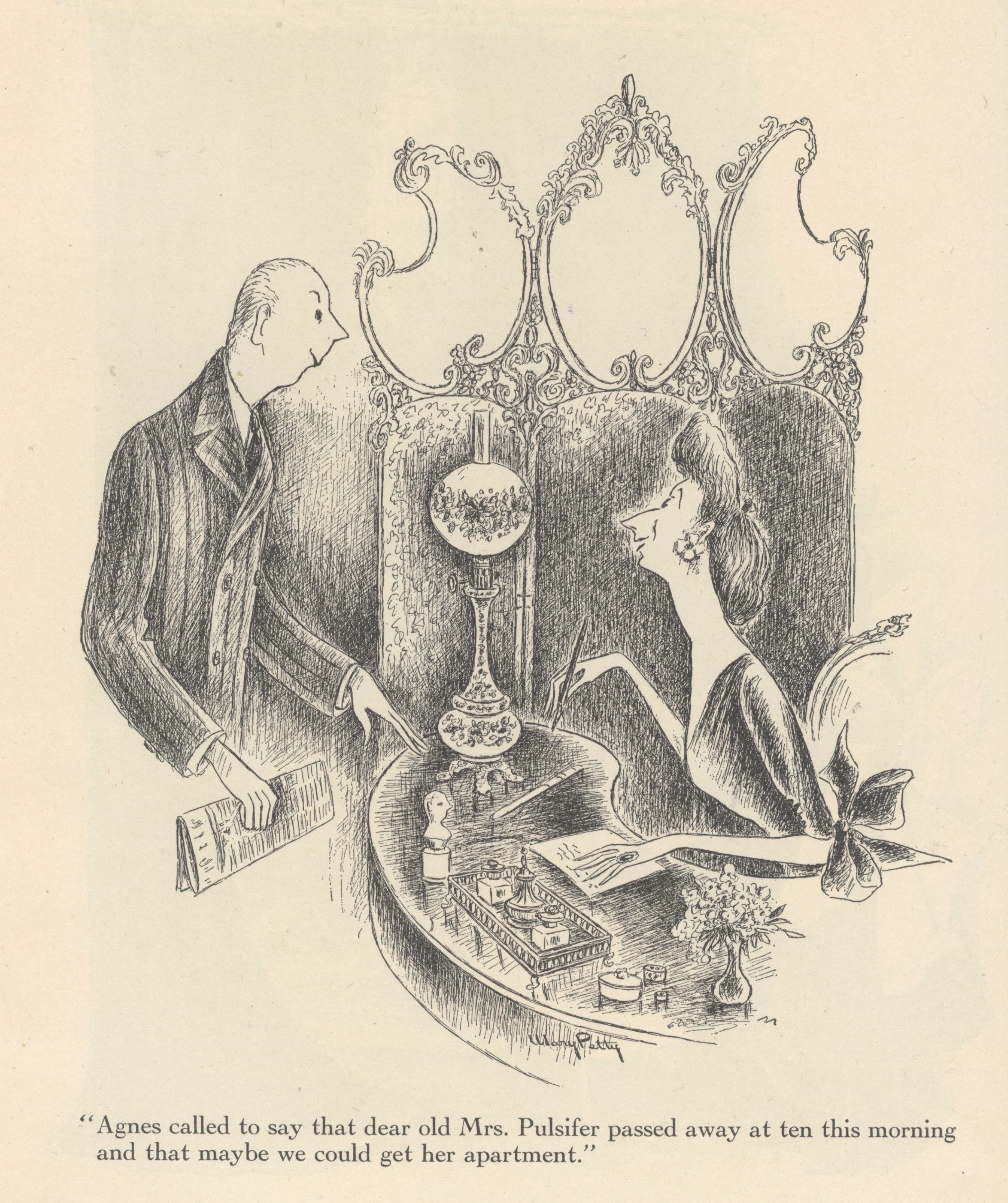
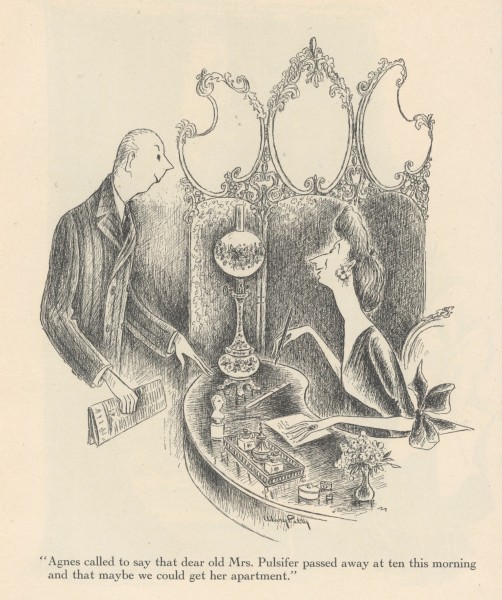
The office puppy has arrived! So today’s Post is without comment but we hope it makes everyone smile: it’s so full of overtones and humour, and sadness.
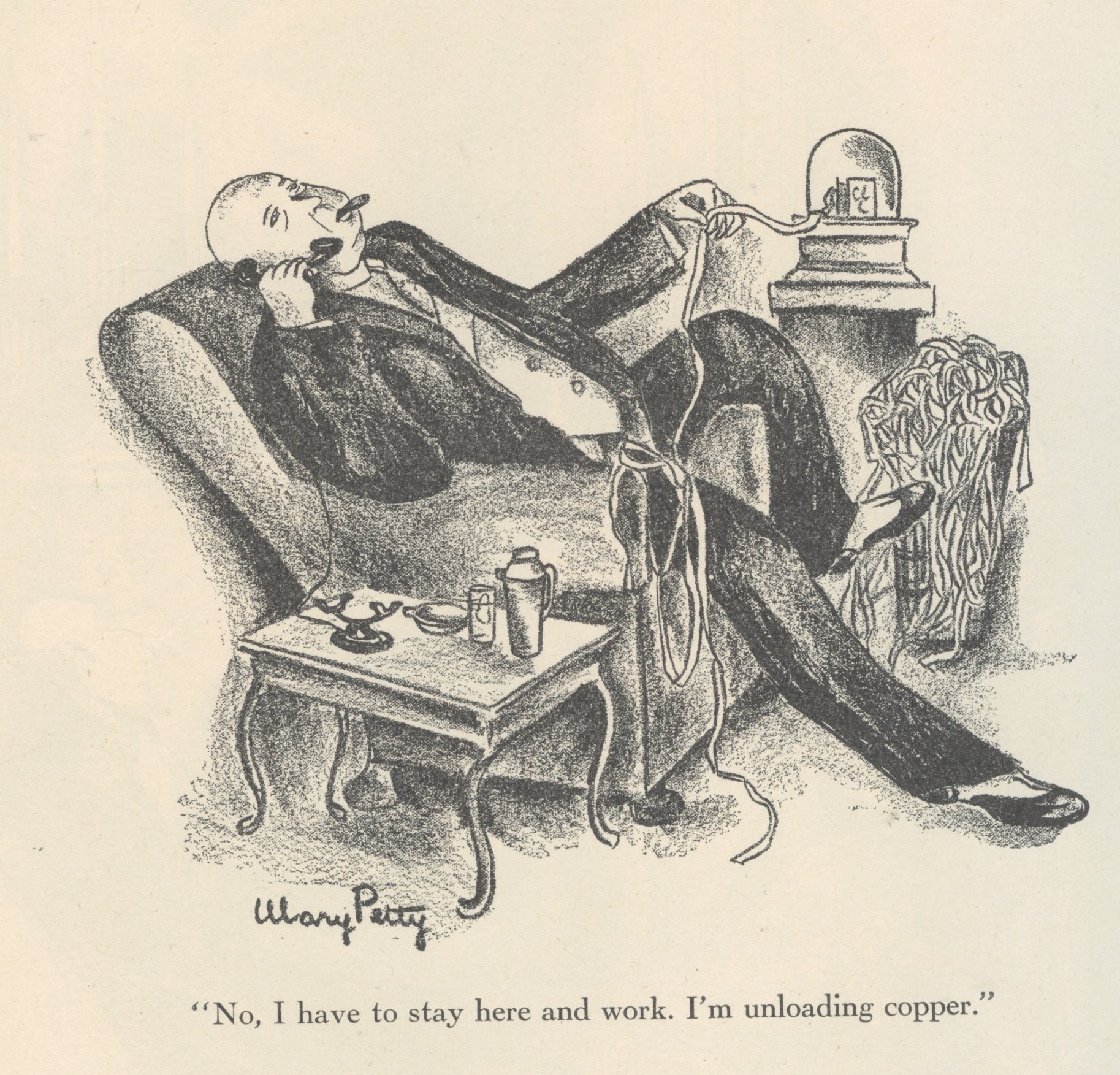
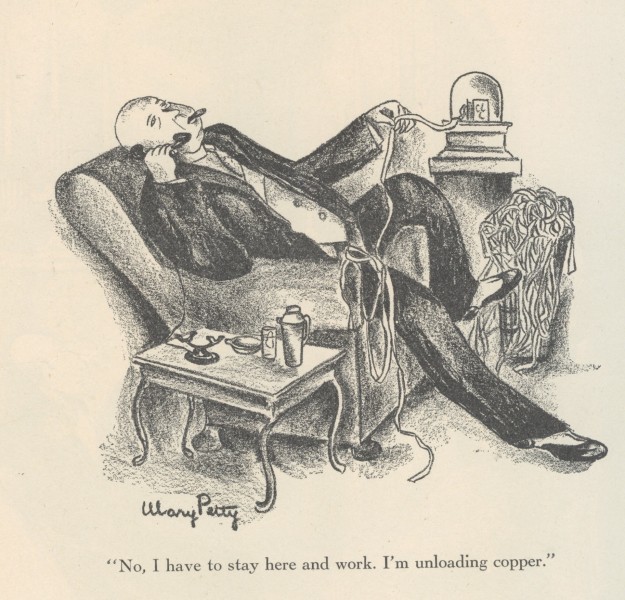
Thurber continues (in the preface to a book of Mary Petty’s cartoons published in 1946) : ‘Her drawings are always funny, and often uproarious, but …we can see beneath the fun, the sharpness of her thrust, the way (to take a line from one of her characters) she hits out at life. In those awful houses her imagination has invaded, she has done a beautiful job on the stuffy, the arrogant, the idle, the complacent, and the empty.’
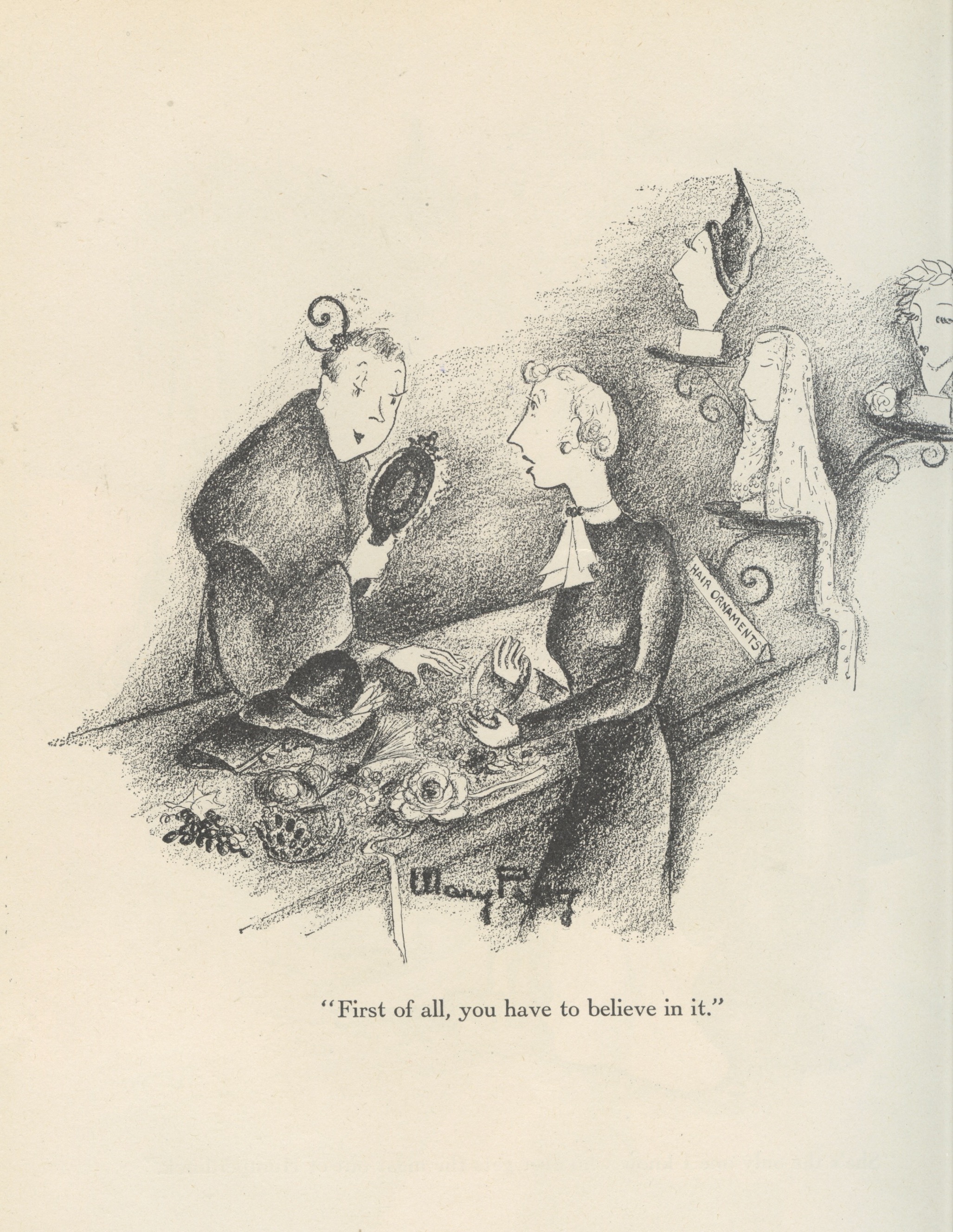
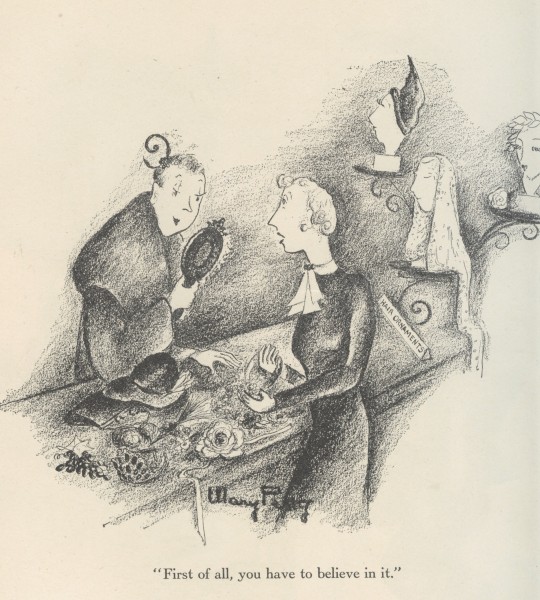
This week on the Post something to make us laugh: the work of Mary Petty, who drew cartoons and covers for The New Yorker between 1927 and 1966. She was 28 when she submitted her first cartoon but did not become part of the New Yorker elite, being famously shy and retiring.’She never studied art,’ wrote James Thurber, ‘but taught herself, with the same slow patience and great care with which she makes each of her drawings, sitting in what she insists its a dark corner. It takes her three weeks to finish a drawing, and at the end of that that time she protests that she hates the drawing and herself. Everybody else, of course, loves it and her.’ The drawings on the Post this week are undated but appeared in The New Yorker between 1927 and 1945. Persephone readers will get the impression, as the week goes on, that each vignette happened to Mary Petty herself, or was overheard: the joke is in their verisimilitude. The cartoons also relate to fiction and the short story in particular: each one is a short story, or has enough background to become a novel. And just like in a novel, glimmering at the back of the cartoon is the sadness, not to say tragedy. And yet the only thing to do is laugh. (Also as the week goes on readers of the Post will marvel at the expressions on the faces; with one tiny pencil line Mary Petty can evoke a whole personality.)